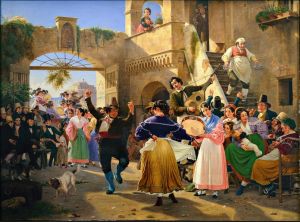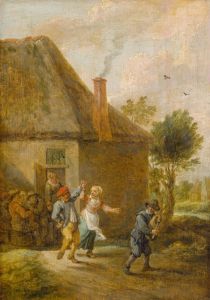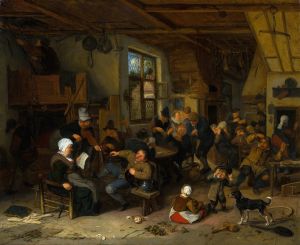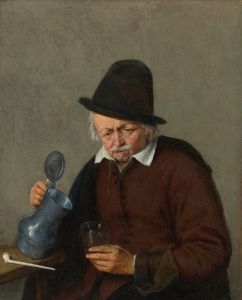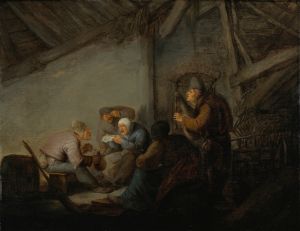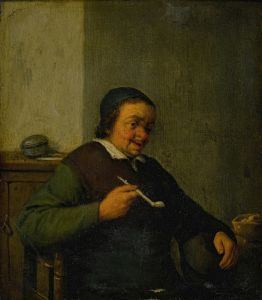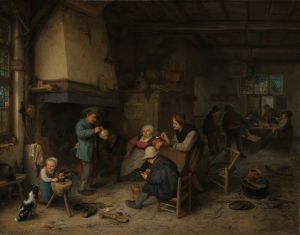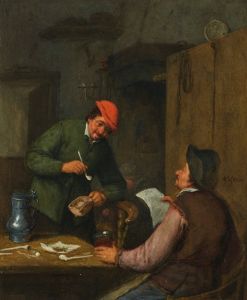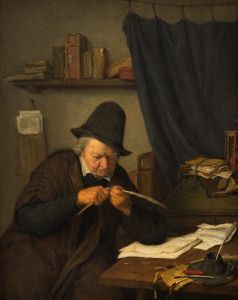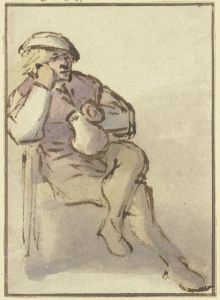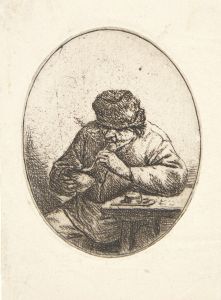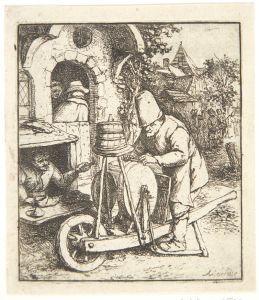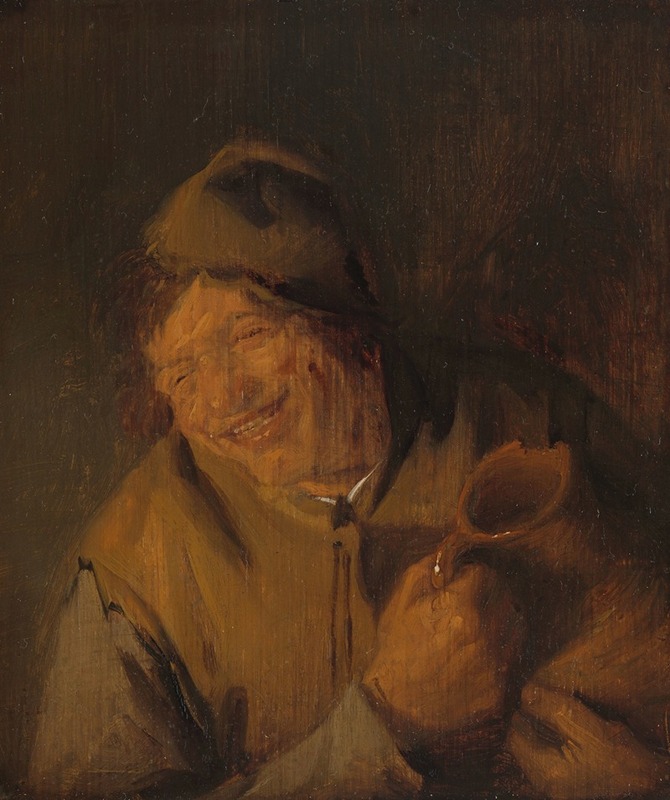
The Merry Peasant
A hand-painted replica of Adriaen van Ostade’s masterpiece The Merry Peasant, meticulously crafted by professional artists to capture the true essence of the original. Each piece is created with museum-quality canvas and rare mineral pigments, carefully painted by experienced artists with delicate brushstrokes and rich, layered colors to perfectly recreate the texture of the original artwork. Unlike machine-printed reproductions, this hand-painted version brings the painting to life, infused with the artist’s emotions and skill in every stroke. Whether for personal collection or home decoration, it instantly elevates the artistic atmosphere of any space.
Adriaen van Ostade was a Dutch Golden Age painter known for his genre scenes depicting peasant life. Born in 1610 in Haarlem, Netherlands, van Ostade was a contemporary of other notable artists such as Frans Hals and Rembrandt van Rijn. He was a student of Frans Hals and was influenced by the works of the Flemish painter Adriaen Brouwer, who was known for his lively depictions of peasant life and tavern scenes.
"The Merry Peasant" is one of van Ostade's many works that captures the essence of rural life in the 17th century. Although specific details about this particular painting are scarce, van Ostade's oeuvre is characterized by its detailed and lively portrayal of everyday scenes. His paintings often include peasants engaged in various activities such as drinking, playing music, or engaging in lively conversation, set against the backdrop of rustic interiors or village exteriors.
Van Ostade's work is noted for its vibrant use of color and attention to detail, which bring his scenes to life. His paintings often convey a sense of warmth and humor, capturing the jovial and sometimes raucous nature of peasant life. This approach was part of a broader trend during the Dutch Golden Age, where artists focused on genre painting that depicted scenes from everyday life, moving away from the religious and historical subjects that had dominated earlier European art.
The composition of van Ostade's paintings typically includes a central figure or group of figures, with careful attention to the play of light and shadow, which adds depth and dimension to the scene. His use of chiaroscuro, a technique that contrasts light and dark, helps to highlight the expressions and gestures of his subjects, adding to the narrative quality of his work.
Van Ostade's paintings are also appreciated for their social commentary. While they often depict the merriment and simplicity of peasant life, they can also be interpreted as a reflection on the human condition, capturing both the joys and hardships of rural existence. His work provides valuable insight into the culture and society of the Netherlands during the 17th century, offering a window into the lives of ordinary people during this period.
Throughout his career, Adriaen van Ostade produced a significant number of paintings, drawings, and etchings. His works were highly sought after during his lifetime and continue to be appreciated for their artistic merit and historical significance. Van Ostade's influence extended beyond his own time, as he inspired subsequent generations of artists who admired his ability to capture the spirit of everyday life with authenticity and charm.
In summary, while specific information about "The Merry Peasant" is limited, it can be understood within the broader context of Adriaen van Ostade's work, which is celebrated for its lively and detailed portrayal of peasant life in the Dutch Golden Age. His paintings remain an important part of art history, offering a glimpse into the social and cultural fabric of 17th-century Netherlands.





